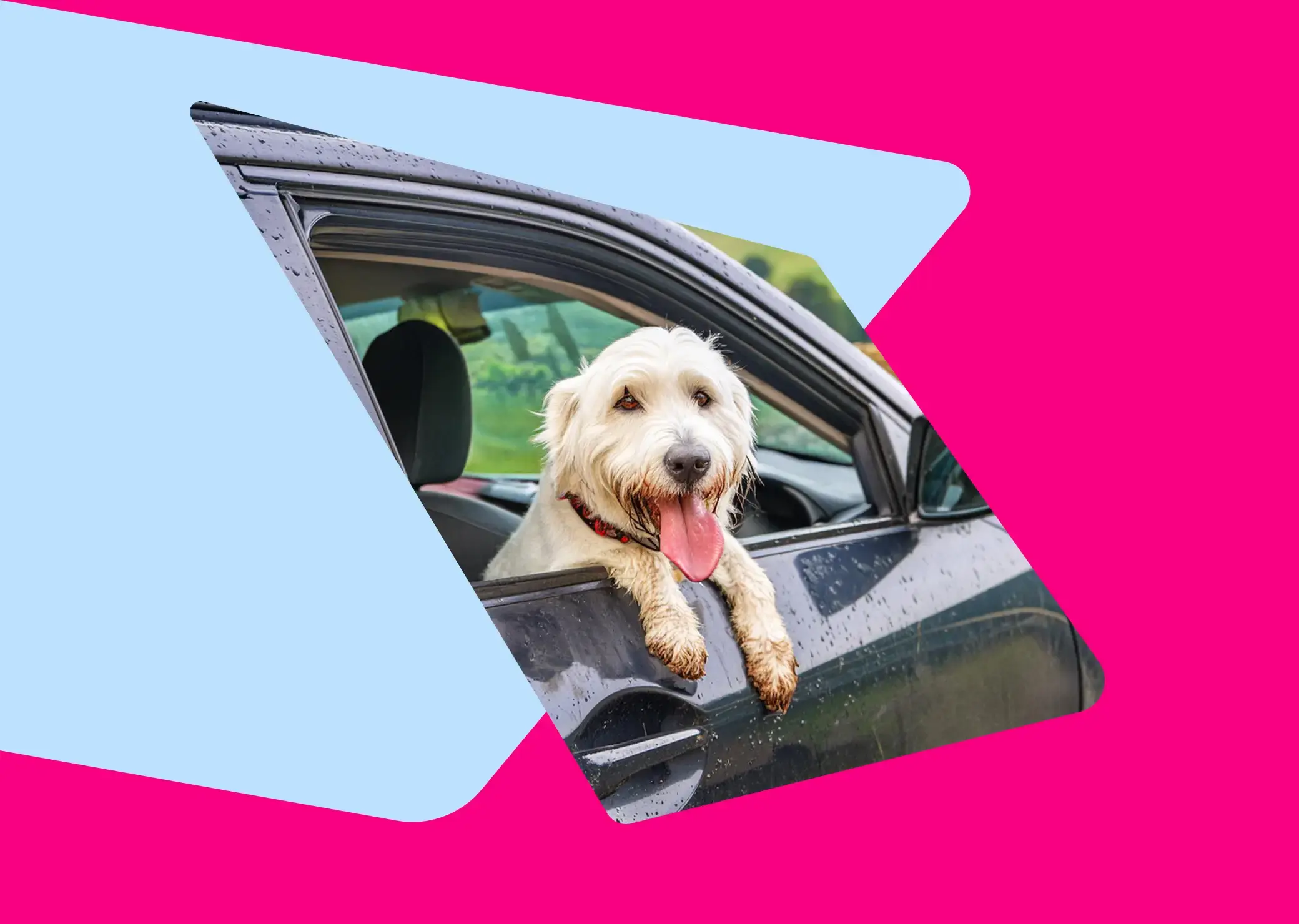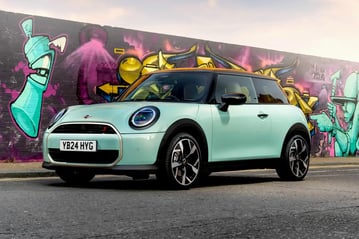- Carmoola
- Blog
- Tips and Advice
- Should I buy a Category D car?
- 🗞 Tips and Advice
- Last updated: Feb 11, 2022
- 9 Min Read
Should I buy a Category D car?
Written by

Verified by


See how much you can borrow in 60 seconds
| Representative Example | |
|---|---|
| Loan amount | £10,000 |
| Interest rate | 13.9% APR |
| 54 payments of | £246 |
| Total cost of credit | £3,284 |
| Option to purchase fee | £1 |
| Total payable | £13,285 |
Did you know that cars that are written off can sometimes be repaired and put back on the road?
While that might sound risky, the truth is that not all write-offs are created equal. Cars can be categorised as a write-off with relatively minor damage if the insurer decides it’s not worth paying for the repairs.
While Category A and B cars are destined for the scrap heap, Category C, D, N, and S cars are available to buy and they could be made safe for the road with a little investment and some TLC from a professional mechanic.
But while low-cost write-offs can look like a great deal, they often come with challenges that might mean the risk doesn’t outweigh the reward.
Got a specific question in mind? Why not skip ahead:
- What does Category D mean?
- What damage will a Category D car have?
- What are the ‘write-off’ categories?
- Why wouldn't an insurer have a Category D car repaired?
- Is a Category D car safe to drive?
- Should I buy a Category D car?
- Can you insure a Category D car?
What does Category D mean?
A car that’s been labelled as Category or Cat D will have been written off because the insurer has decided it’s not worth repairing.
To be placed in Cat D, the car will need repairs that the insurer predicted would cost at least 50% of the car’s total value.
For example, if the car would be worth £3,000 on the resale market but it needs £1,750 worth of repairs, the insurer could decide to write it off and classify it as Cat D instead of paying for it to be fixed.
What damage will a Category D car have?
In most cases, a Cat D car will have non-structural damage. That means its frame and chassis will likely still be intact, but there might be issues under the hood, damage to its bodywork, or a fault with the electrics.
Unfortunately, the category alone won’t tell you whether the car was damaged in an accident, a flood, or an act of vandalism. Even so, a car in Cat D won’t necessarily have been written off because the insurer thinks it's unsafe, but because the cost of repairing it is too high.
What are the ‘write-off’ categories?
There are four write-off categories in the UK:
Cat A
These cars are severely damaged and must not be repaired and returned to the road. Usually, they must be crushed instead.
Cat B
Like Cat A, these cars will be extremely badly damaged and should be crushed, but they might have some usable parts that can be recycled and reused in other vehicles.
Cat S
These are cars that have sustained some structural damage but, if repaired, could be made safe to drive on the road.
Cat N
These cars can also be repaired and made roadworthy but will have sustained some non-structural damage.
Before 2017, Cat C and Cat D were used instead of Cat S and Cat N. While these categories do have some overlap, the big difference between Cat C and D and the new categorisation is that they focus on repair costs rather than whether the damage is structural. The cost of repairing a Cat C car will usually be more than its current value. Cat D cars can also be repaired but the cost would represent more than 50% of the car’s value.
Why wouldn't an insurer have a Category D car repaired?
It’s all about the costs involved. When assessing the damage on a Cat D car, the insurer will look at how much the repairs will cost vs. how much the car is currently worth on the resale market.
They’ll take the total cost of repair into consideration. This means they’ll look at how expensive it might be to source parts, especially if it’s an older model, as well as how much it would cost to provide a hire car while repairs are being carried out.
If the insurer calculates that these costs will add up to more than 50% of the car’s value, they’ll likely deem it too expensive to make the repairs and write it off as a Cat D car instead.
Is a Category D car safe to drive?
The scale of damage on a Cat D car can range from purely cosmetic to issues with the engine or the electronics.
Even so, as these aren’t structural problems and aren’t severe enough to land the car in Cat A or B, it should be safe to drive once it’s been repaired to a high standard.
If you decide to take a chance on a Cat B car, it’s best to find a mechanic you trust to carry out the repairs. Make sure they double-check every part of the car, not just the surface damage. Problems can emerge later down the road, especially if the safety systems were activated or damaged in an accident.
Should I buy a Category D car?
Buying a Cat D car can be a gamble. You might be able to get a great deal by choosing a car in this category.
Some Cat D cars can be older cars with some cosmetic damage that, due to their low value, aren’t worth repairing despite the damage not being too severe. A quick paint job and you could be good to go!
However, other models can need more complex repairs with issues that are harder to find, especially if there’s damage to parts of the engine or the electrics. These might not be immediately noticeable and could come back to bite you later. Getting the car repaired to a high standard so that you know you’ll be safe on the road could end up being costly.
When deciding whether to buy a Cat D car, make sure you carry out thorough checks. Look over its exterior and interior and ask to take it for a test drive before making an offer. You might also want to take it to a professional mechanic to ensure everything is in good order and check an insurance comparison site to get an idea of how much it might cost to insure.
Can you insure a Category D car?
Cat D cars are a risk and that can make it harder to find insurance. While you can ensure the car is repaired to a high standard so it’s safe to drive, the insurer can’t be certain that you’ve solved all the issues and new problems won’t emerge in time.
Unfortunately, this means some insurers will refuse to offer cover to Cat D cars and others will charge a higher premium to offset the perceived risk.
FAQs about Category D cars
When were the new write-off categories introduced?
In October 2017, the UK’s write-off categories were revamped to offer more information on the type of damage cars in each category have sustained.
Cat A and B remained the same, but Cat C became Cat S (to show that the car has sustained structural damage), and Cat D became Cat N (non-structural damage).
However, cars written-off before 2017 didn’t change category, so you might still find older cars on the market listed as a Cat C or Cat D.
Is it worth buying a Category D car?
Whether you take a risk on a Cat D car will depend on how comfortable you are with taking a gamble.
You’ll likely be able to pick up a Cat D for a much cheaper price than an undamaged model, but it’s worth keeping in mind that the repairs needed might be expensive and could eat into any savings you make on its purchase price. Insuring your repaired car will also likely be more expensive.
However, if you’re a skilled mechanic – or have a close friend or family member who can make professional level repairs – you might be able to cut those repair costs and end up with a real bargain.
Once repaired, the car should be completely safe to drive, but that doesn’t mean that new problems won’t arise in the future. There are a lot of unknowns involved, but if you’re prepared to take that risk, a Cat D might be the right choice for you.
Can a Category D status be removed?
Write-off status is a one-way street: once a car has been written off and placed in a category, it will keep that status no matter what. Even if you’ve invested the time and money to fix any issues, your repaired car will still be classed as a Cat D.
Is it illegal to sell a Cat D car?
See how much you can borrow in 60 seconds
| Representative Example | |
|---|---|
| Loan amount | £10,000 |
| Interest rate | 13.9% APR |
| 54 payments of | £246 |
| Total cost of credit | £3,284 |
| Option to purchase fee | £1 |
| Total payable | £13,285 |
Related articles
What Are the Top 5 Used Car Websites in the UK?
Thanks to the internet, searching for a used car in the UK is easier than ever before. You can simply head online, visit a used...
What Is GMFV in PCP Car Finance? Guaranteed Minimum Future Value Explained
GMFV, or Guaranteed Minimum Future Value, is the amount your lender estimates your car will be worth at the end of your PCP...
Does Financing a Car Build Your Credit?
Financing a car can build credit when you make payments on time, but it can damage your score if you miss payments or take on...

.webp?width=832&height=592&name=customer-support%20(1).webp)










.webp?width=400&height=285&name=online-shoppers-with-dog%20(1).webp)


.jpg?width=500&height=356&name=Vintage%20car%20going%20to%20an%20old%20town-1%20(1).jpg)





